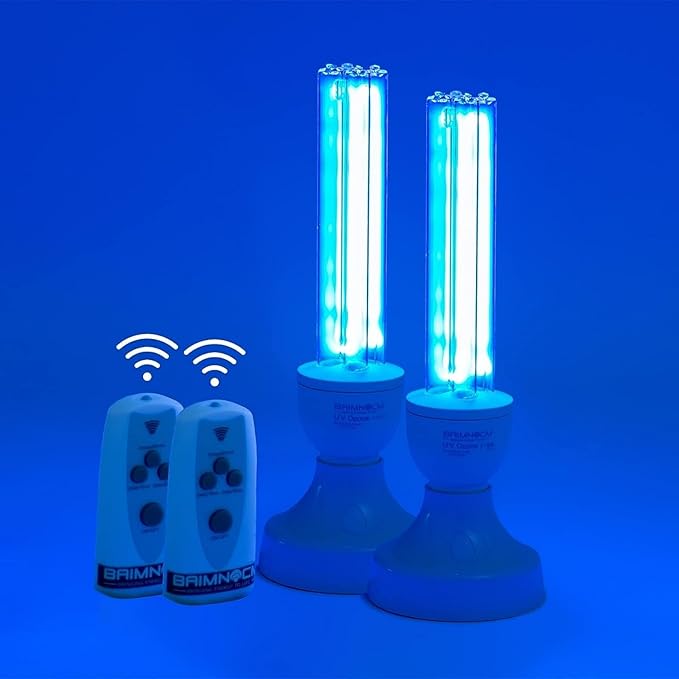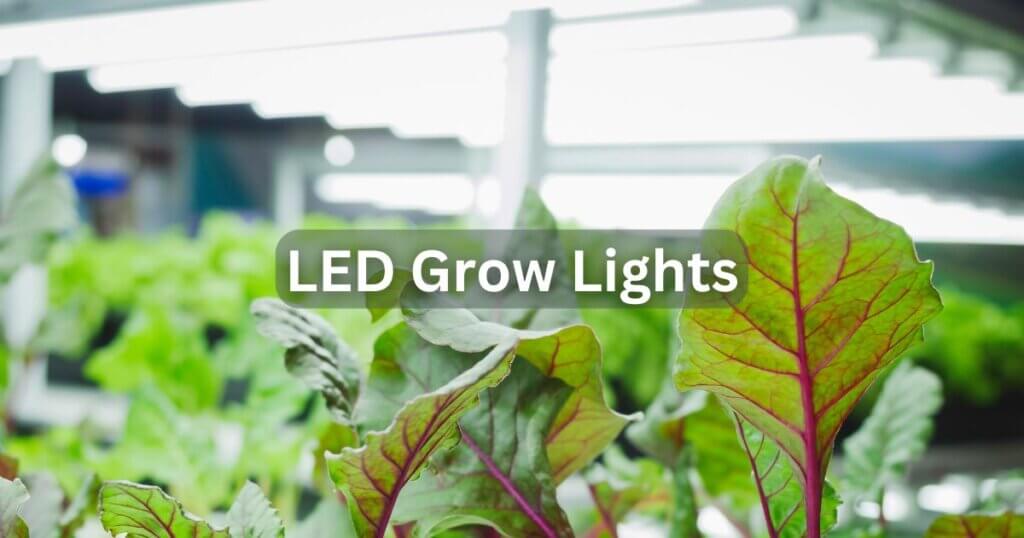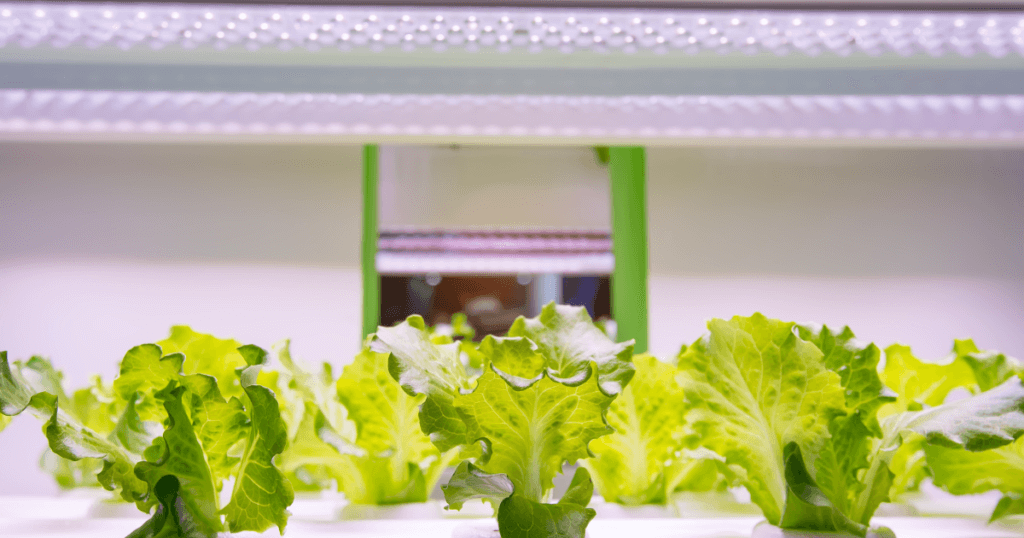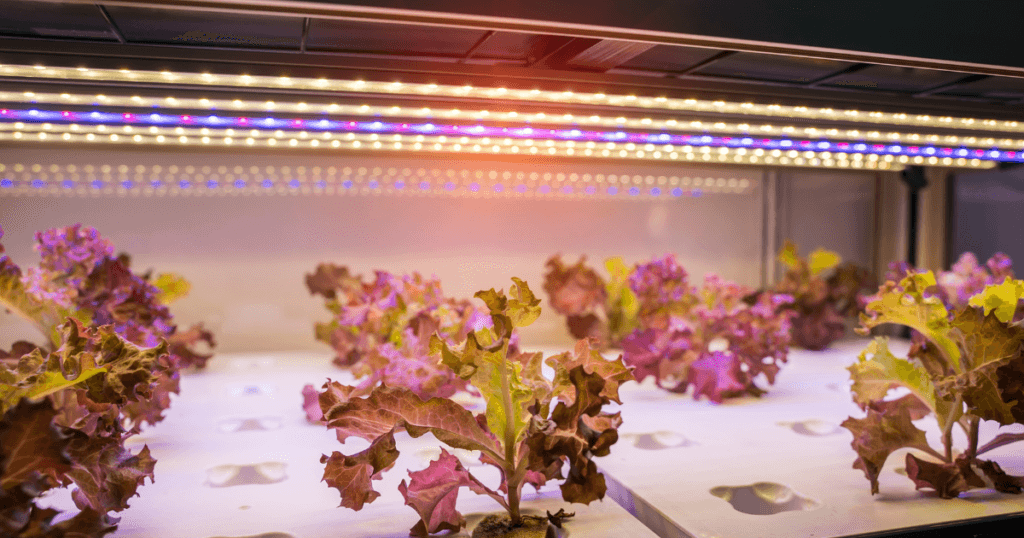UV Sterilization Indoor Farming: A Game-Changer for Clean, Healthy Crops

Some of the links in this post are affiliate links. As an Amazon Associate, we earn a referral fee from qualifying purchases—at no extra cost to you.
Welcome to the future of farming—where innovation meets sanitation. If you’ve been dreaming of a pest-free, disease-free, and ultra-productive indoor garden, you’re in the right place. In this post, we’re diving deep into the revolutionary role of UV sterilization in indoor farming, and why it’s becoming an essential part of modern agricultural systems.
Ready to grow cleaner, safer, and smarter? Let’s get into it.
Table of Contents
What Is UV Sterilization and Why It Matters in Indoor Farming
UV sterilization refers to the use of ultraviolet (UV) light to destroy microorganisms like bacteria, viruses, and fungi. In the controlled environment of indoor farming, where every square inch counts and any contamination can ruin a crop, UV sterilization provides a powerful defense. It’s a chemical-free way to sanitize air, water, and surfaces—something that makes it a favorite among environmentally-conscious growers. Plus, it’s highly effective, even against tough-to-kill pathogens that laugh in the face of traditional cleaners.
The Science Behind UV Sterilization: How It Works
So, how does UV sterilization actually work?
UV light, particularly UVC light, penetrates the cell walls of microorganisms. It scrambles their DNA, preventing them from reproducing or performing normal functions. Think of it like erasing the instruction manual of a virus—it simply can’t function anymore. This method doesn’t just kill microbes—it renders them completely useless. And the best part? It does this in seconds without leaving behind residues or creating resistance.
Types of UV Light: UVA, UVB, and UVC Explained
- UVA (315–400 nm): Least effective in sterilization, mostly used in tanning.
- UVB (280–315 nm): Can damage DNA but is not as efficient for sterilization.
- UVC (100–280 nm): The most germicidal. UVC is the go-to choice for sterilization in indoor farms.
Why UVC Light Is the Hero in UV Sterilization
UVC light has just the right wavelength to break molecular bonds in microbial DNA. This makes it extremely effective at neutralizing bacteria like E. coli, fungi such as powdery mildew, and even viruses that can linger in indoor grow spaces. Because it doesn’t rely on chemicals or heat, UVC leaves your crops and environment untouched—except for the microbes you’re targeting.
UV Sterilization Indoor Farming Benefits You Can’t Ignore
Kills Harmful Pathogens Without Chemicals
Let’s be honest—chemical pesticides and disinfectants can be a bit much. They often come with residues, strong smells, and long wait times before re-entry. UV sterilization eliminates all of that. Just light, and you’re done. No residue. No rinse. No worries.
Boosts Plant Health and Growth Efficiency
When you reduce the pathogen load in your grow space, plants naturally grow better. They don’t have to spend energy fighting off disease, which means more energy goes toward growing lush leaves and strong roots. It’s like sending your plants on a health retreat.
Reduces Cross-Contamination in Indoor Grow Spaces
In tight indoor environments, one infected plant can quickly lead to a full-blown outbreak. UV systems keep surfaces, air, and water clean—drastically reducing the chances of cross-contamination. That means fewer losses and more predictable yields.
Where UV Sterilization Fits in an Indoor Farming Setup
Air Sterilization Systems in Grow Rooms
Airborne pathogens are notoriously difficult to manage in indoor farming environments. Installing UV-C systems in HVAC units or using dedicated air purifiers helps neutralize mold spores, bacteria, and viruses in the air. These systems continuously clean circulating air, reducing the risk of disease outbreaks. It’s a simple yet powerful upgrade to protect your entire crop environment.
This BAIMNOCM 50 Watt UV Light is designed to kill airborne pathogens in enclosed environments. As your post explains, installing UVC in HVAC or as standalone air purifiers helps neutralize mold spores, bacteria, and viruses circulating in grow rooms. This device is easy to integrate, quiet, and made by a trusted brand in germicidal technology—making it a compelling option for ensuring cleaner air and healthier crops.
Water Treatment with UV: A Clean Irrigation Revolution
UV systems can sterilize irrigation water before it reaches your plants, eliminating pathogens without chemicals. This is especially valuable in hydroponic setups where water is reused repeatedly. Clean water promotes strong root systems and minimizes disease. It’s a proactive way to ensure healthy, high-yield crops.
Hydro Logic UV Sterilizer Kit for RO System is essential for hydroponic setups to prevent root rot and maintain sterile irrigation water. ZipGrow and other growers recommend sizing the lamp to flow rate for algae and pathogen control. This Hydro Logic kit fits RO systems beautifully and is a practical, user-friendly solution for clean water delivery.
Surface Sterilization: Keeping Tools and Benches Germ-Free
Portable UV sterilizers make it easy to disinfect tools, benches, and packaging during critical growing and harvesting phases. These surfaces often carry hidden contaminants that can compromise plant health. Quick UV treatment helps maintain hygiene without the need for harsh chemicals. Consistent sterilization leads to safer produce and a more efficient workflow.
This mini UV‑C chamber offers a compact, safe way to disinfect frequently handled gear—ensuring consistent sanitation between uses.
How to Choose the Right UV Sterilization System for Indoor Farming
Key Features to Look For
- Wavelength: Ensure the system uses UVC light (preferably 254 nm).
- Coverage Area: Match the device size to your grow space.
- Material Compatibility: Make sure the light won’t degrade plastics or reflect dangerously.
Best Placement for Maximum UV Efficiency
Place UV systems in:
- HVAC ducts for air treatment
- Overhead systems for air and surface sterilization
- Water inlets in hydro systems
- Tool stations for surface cleaning
Pro tip: Reflective surfaces like aluminum can improve UV coverage in grow rooms.
Safety First: Managing UV Exposure in Indoor Farms
Protecting human workers from UV radiation is critical, as UVC light can cause serious harm to skin and eyes. Proper shielding, automatic shutoff interlocks, and UV-rated protective gear are essential safety measures. Smart sensors and timers enhance safety by ensuring UV systems only operate when no one is in the room. With motion detection and remote activation, you can maintain effective sterilization without putting anyone at risk.
UV Sterilization vs Traditional Methods: What’s Better?
Chemical Disinfection vs UV
| Feature | Chemicals | UV Sterilization |
|---|---|---|
| Residue | Yes | No |
| Time to Apply | 10–30 min | Seconds to minutes |
| Risk of Resistance | High | Low |
| Safety | Moderate (PPE) | High (if shielded) |
UV wins in speed, safety, and cleanliness.
Heat Treatment vs UV Sterilization
Heat can damage delicate plants and electronics. UV, on the other hand, sterilizes without raising the temperature—making it ideal for live environments.
Cost of UV Sterilization for Indoor Farming
While UV systems require an initial investment—ranging from $200 to $2,000 depending on size and features—they quickly pay for themselves by reducing the need for chemicals, manual labor, and minimizing crop loss. In small-scale indoor farms, even a basic UV unit can prevent devastating mold outbreaks and save entire harvests. For commercial operations, the savings can reach tens of thousands by protecting crops and streamlining operations. Over time, UV systems prove to be a smart, cost-effective tool for maximizing yield and protecting your investment.
Real-Life Examples of UV Sterilization Success in Indoor Agriculture
- Vertical lettuce farms in Japan use UV to keep produce sterile and extend shelf life.
- Cannabis growers in California use UV to eliminate powdery mildew without harming plants.
- Herb producers in the Netherlands have seen a 30% increase in crop quality thanks to water sterilization via UVC.
These aren’t hypotheticals—these are real, measurable gains.
Tips for Getting Started with UV Sterilization Indoor Farming
- Start small: Begin with UV water sterilizers or tool sanitizers.
- Do a risk analysis: Identify hotspots for contamination in your farm.
- Layer your defenses: Combine UV with HEPA filters and hygiene practices.
- Read the manuals: Understand operating times, distances, and safety warnings.
Future of UV Technology in Sustainable Indoor Farming
As the world shifts toward cleaner, more sustainable agriculture, UV sterilization is quickly becoming a foundational technology. Innovations such as LED-based UVC lights, robotic surface sterilizers, and IoT-integrated UV systems are making it more efficient, accessible, and precise. These advancements not only reduce reliance on chemicals but also streamline farm hygiene with smart, automated solutions. The future of indoor farming is bright—and increasingly powered by UV.
Expect UV to be as common as grow lights in the indoor farms of tomorrow.
UV Sterilization Is the Clean Future of Indoor Farming
Indoor farming is all about control—and nothing gives you more control over microbial threats than UV sterilization. It’s clean, efficient, and cost-effective. Whether you’re running a commercial vertical farm or a closet-sized hydroponic setup, integrating UV sterilization in indoor farming can be a total game-changer.
Go ahead, give your plants the cleanest home possible. They’ll thank you with bigger yields and healthier roots.
FAQs – UV Sterilization Indoor Farming
1. Can UV sterilization harm beneficial microbes or insects in my indoor farm?
UV sterilization targets all microorganisms indiscriminately, so it can kill beneficial microbes as well. For that reason, it’s best used carefully and strategically—like sterilizing water or air—while preserving beneficial organisms through other means.
2. How often should I replace UV lamps or bulbs in my sterilization systems?
UV lamps typically lose effectiveness over time and should be replaced every 6 to 12 months depending on usage and manufacturer guidelines to maintain optimal sterilization performance.
3. Is UV sterilization effective against all indoor farm pathogens, including viruses, fungi, and bacteria?
UVC light is broadly effective against many pathogens, including bacteria, viruses, and fungal spores, but the efficiency depends on exposure time, intensity, and distance. Some pathogens may require longer exposure or combination treatments.
4. Can UV sterilization be safely used around humans, or does it require empty grow rooms?
Direct exposure to UVC light is harmful to human skin and eyes, so UV sterilization systems must have safety features like shielding, automatic shutoffs, or be used only when the room is unoccupied.
5. How does UV sterilization impact energy consumption in an indoor farming setup?
While UV systems add extra electricity use, they can reduce overall energy costs by minimizing disease outbreaks and lowering the need for chemical disinfectants and labor, leading to more efficient crop production.
Other Useful Resources Related To UV Sterilization Indoor Farming
- The 5 Benefits of UV-C Disinfection in Horticulture – Priva
- This article discusses how UV-C disinfection enhances plant health, offers pathogen protection, promotes sustainability, and ensures compliance in horticultural practices. (priva.com)
- Using UV Sterilization in Your Recirculating Hydroponic Crop – Science in Hydroponics
- This resource explains the application of UV light as a non-invasive method to maintain sterility within hydroponic solutions, highlighting its effectiveness in controlling microbial growth. (scienceinhydroponics.com)
- UV-C Disinfection in Vertical Farming – UV Technology Limited
- This page details how UV-C disinfection systems can reduce micro-organisms by up to 99.99%, providing a significant advantage in food safety and crop quality in vertical farming setups. (uvtglobal.com)
- UV Light’s Role in Enhanced Horticultural Production – Alpha-Purify
- This article explores the increasing use of UV light for disinfecting air and purifying water in horticulture, emphasizing its benefits in sustainable and safe food production. (alpha-purify.com)
- UV-C’s Role in Protecting Crops & System Efficiency – ACHR News
- This piece examines how UV-C provides an efficient means of protecting crops, particularly cannabis, from mold, and discusses its role in maintaining system efficiency in cultivation facilities. (achrnews.com)






